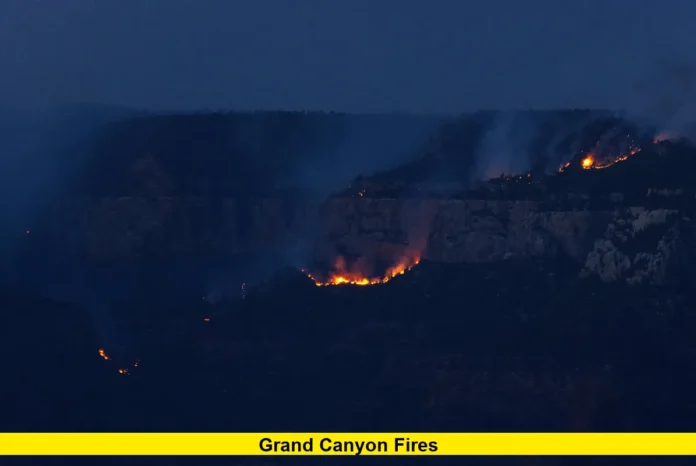The ongoing situation with Grand Canyon fires has become increasingly dire, particularly concerning a wildfire burning along the North Rim. Historically dry conditions have combined with gusty winds to make it harder for crews to get a handle on this blaze, causing containment figures to plummet. In just a few days, the fire has nearly tripled in size, leading to significant challenges for firefighters and extensive damage within the national park.
As of today, July 30, 2025, the Dragon Bravo Fire on the North Rim has expanded dramatically. What was once a small, lightning-sparked fire, initially managed with a “confine and contain” strategy, has now become a raging inferno. The shift in weather, with uncharacteristically strong winds and critically low humidity, has propelled the flames beyond initial containment lines.
Reports from the National Park Service and other federal agencies indicate that the North Rim developed area remains closed for the remainder of the 2025 season due to the extensive damage. The Dragon Bravo Fire has unfortunately claimed numerous structures, including the historic Grand Canyon Lodge, the North Rim Visitor Center, and many guest cabins. Images shared online reveal charred remains and a landscape significantly altered by the blaze.
The fire, which began on July 4, saw its containment drop from approximately 26% last week to single digits this week. This dramatic decrease in containment underscores the severity of the conditions and the unpredictable nature of wildfire behavior in such dry and windy environments. The fire has now spread across more than 110 square miles (about 285 kilometers), consuming vast areas of forest.
Firefighting efforts are ongoing, with over a thousand personnel deployed to combat the Dragon Bravo Fire. However, the combination of dense biomass in the pine forest and persistent low humidity is driving the fire’s northward expansion. Operations chiefs have described recent days as “dynamic fire days,” witnessing rapid growth that has made suppression incredibly difficult. Even efforts like deploying aerial fire retardant have faced hurdles, including an incident involving a chlorine gas leak at the North Rim water treatment facility that temporarily forced firefighters to evacuate key areas.
The challenges faced by crews highlight the complex interplay of fuels, weather, and topography in wildfire behavior. The towering mixed conifers and ponderosa pines on the North Rim provide ample fuel, while the sustained winds and absence of typical monsoon moisture this season create an explosive environment. This situation has led to record-high energy release components (ERCs), a measure indicating how dry and flammable vegetation has become.
Beyond the Grand Canyon itself, the National Interagency Fire Center reports that while the number of wildfires nationwide is higher than average this year, the total acres burned remain below the 10-year average. This is largely attributed to swift, coordinated responses from wildland firefighters. However, specific regions like Arizona are experiencing severe conditions, with persistent dry weather and strong southwesterly winds exacerbating existing fires and increasing the risk of new ignitions.
The impact of these Grand Canyon fires extends beyond the immediate destruction of property and natural resources. The closure of the North Rim significantly affects tourism and the local economy, while the long-term ecological recovery of the burned areas will require careful management. The events also bring into focus broader discussions about wildfire management strategies, especially in an era of changing climate patterns and increasingly severe fire seasons.
The unwavering dedication of firefighters and support personnel continues to be crucial in these challenging circumstances. Their efforts, often in dangerous and unpredictable conditions, are vital to protecting lives and mitigating further damage to this iconic national treasure.
What are your thoughts on the ongoing efforts to combat the Grand Canyon fires? Share your perspectives in the comments below, and stay tuned for further updates on this developing situation.
